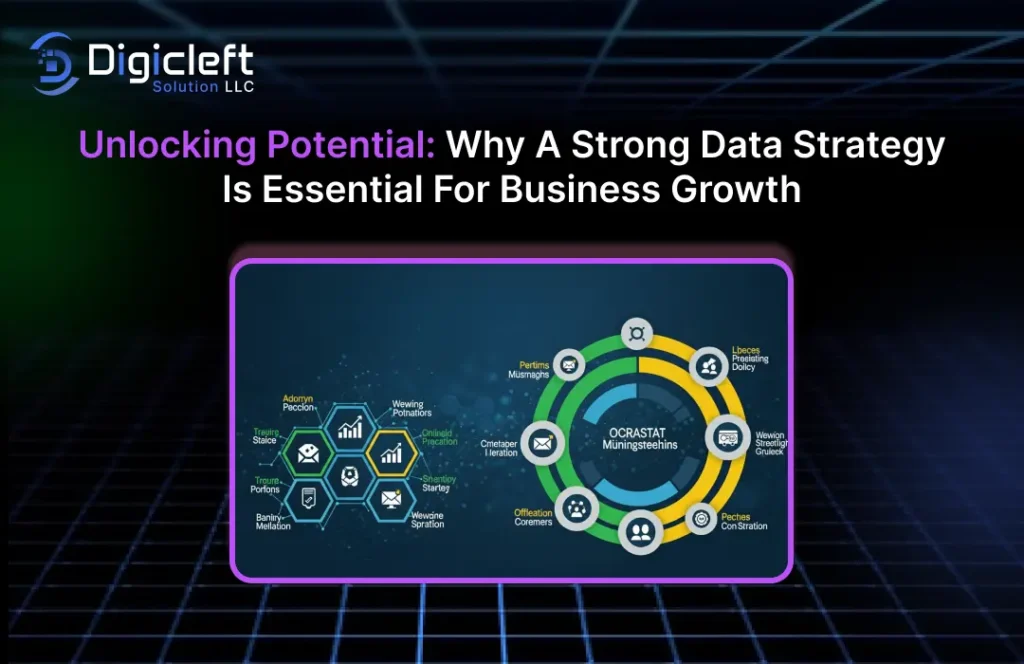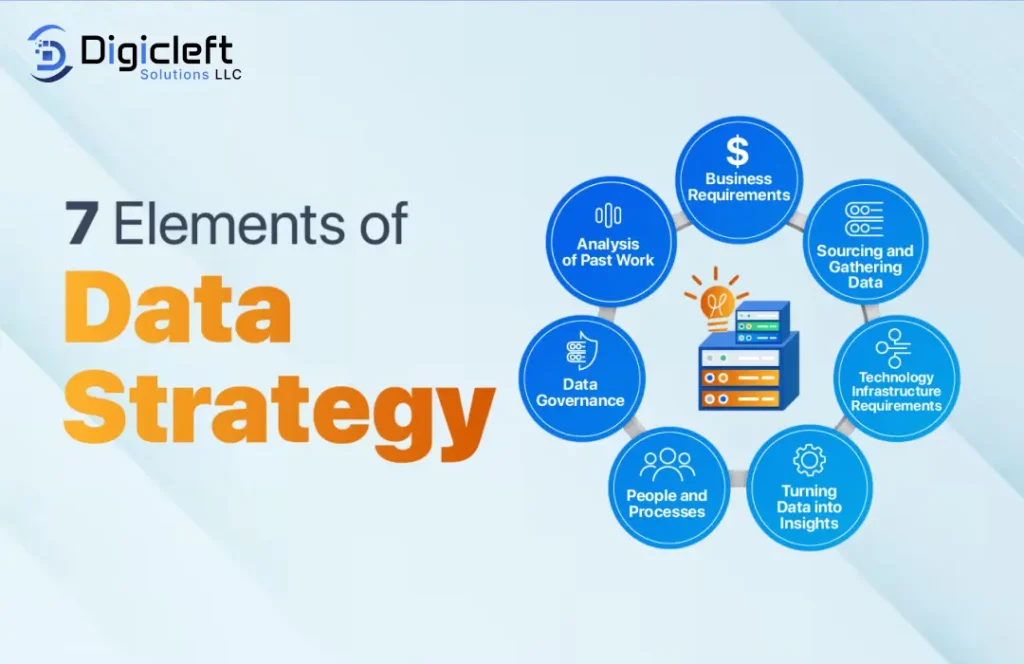
What Is a Data Strategy?
A data strategy is basically your game plan for collecting, managing, and using data effectively. Think of it as a blueprint that helps business growth harness data to achieve goals, make informed decisions, and stay ahead of the competition. Without it, you’re basically wandering in the dark, hoping to stumble upon something useful.
Why Data Is the New Oil
Remember the saying “Data is the new oil”? It’s true. But there’s a catch. Raw data, like crude oil, is pretty useless until it’s refined. Business growth collect massive amounts of data, but if they don’t process and analyze it, that information won’t power innovation or Business Growth. A strong data strategy acts like the refinery, transforming raw numbers into valuable insights.
The Pitfalls of Ignoring Data Strategy
You’d think that in this digital age, every business growth would prioritize data strategy, but many don’t. What happens then?
- Poor Decision Making: Relying on gut feeling instead of data-driven insights often leads to costly mistakes.
- Missed Opportunities: Without proper analysis, emerging trends or customer preferences fly under the radar.
- Wasted Resources: Collecting data without a plan results in storage bloat and inefficiency.
- Competitive Disadvantage: Competitors using data effectively will outpace you in growth and innovation.
Core Components of a Strong Data Strategy

1. Data Collection
It all starts with gathering the right data from the right sources—customer interactions, market trends, social media, sales, and more. But beware! Collecting too much irrelevant data is like hoarding junk—it only slows you down.
2. Data Storage
Data storage is no longer just about hard drives. Cloud solutions, data lakes, and warehouses provide scalable options. The key? Ensure your data is organized, secure, and easily accessible when you need it.
3. Data Analysis
Here’s where the magic happens. Sophisticated analytics tools help turn raw data into actionable insights. From simple dashboards to predictive models, this phase is about discovering patterns and trends that can inform decisions.
4. Data Governance
Data without rules is chaos. Data governance involves policies and practices that maintain data quality, privacy, and security. It’s crucial for compliance with regulations like GDPR and CCPA.
Digicleft Solution: Revolutionizing Data Strategy
Let me introduce you to digicleft solution. This isn’t just another tech buzzword—it’s a comprehensive toolset designed to streamline data strategy.
- Seamless Integration: Easily connects with your existing systems.
- Advanced Analytics: Offers predictive modeling, real-time dashboards, and intuitive visualizations.
- Robust Security: Keeps your data safe from breaches.
- User-Friendly Interface: You don’t need to be a data scientist to navigate it.
Businesses using digicleft solution often report faster decision-making cycles and increased agility in adapting to market changes.
How Data Drives Smarter Decisions
Ever wonder why some companies always seem a step ahead? Data strategy.
When decision-makers rely on accurate data, they:
- Understand market trends before they become obvious.
- Tailor marketing strategies based on real customer insights.
- Optimize supply chains by predicting demand shifts.
It’s like having a GPS for your Business Growth instead of guessing which way to go.
Understanding Customer Behavior Through Data
Data reveals what your customers truly want—beyond what they say in surveys.
- Track website interactions to understand drop-off points.
- Analyze purchase histories to offer personalized recommendations.
- Monitor social media to catch real-time sentiments.
With the right data strategy, you don’t just react to customer needs; you anticipate them.
Data Strategy and Business Agility
In a rapidly changing market, agility is king.
A strong data strategy helps businesses pivot when needed by:
- Quickly spotting declining product performance.
- Identifying new market segments.
- Reallocating resources where they matter most.
Think of it as having a well-oiled engine ready to rev up or slow down based on traffic conditions.
Real-world Success Stories
Let me give you a real-world example.
Take Netflix. Their recommendation engine isn’t magic—it’s driven by a solid data strategy. Every click, pause, or search feeds into their analytics, refining what shows they recommend next. The result? Massive customer retention and satisfaction.
Or look at Amazon. Their data strategy isn’t just about sales numbers but about logistics, inventory management, and customer experience. Without it, their global dominance wouldn’t be possible.
Overcoming Common Data Strategy Challenges
Building a strong data strategy isn’t all rainbows and unicorns. Common hurdles include:
- Data Silos: Departments storing data separately, making it hard to integrate.
- Poor Data Quality: Inaccurate or outdated information leads to bad decisions.
- Lack of Expertise: Not every business has in-house data scientists.
- Resistance to Change: Cultural barriers where decision-making relies on gut feelings.
Solutions?
Implement integrated tools like digicleft solution, provide staff training, and promote a culture of data-driven thinking.
Building a Data-Driven Culture
A powerful strategy means nothing if people don’t use it. How do you build a data-driven culture?
- Lead by example: Executives should make decisions based on data, not instinct.
- Educate: Run workshops and training sessions.
- Reward data-backed success: Celebrate wins from data-driven decisions.
- Promote transparency: Make data accessible across departments.
The Role of Leadership in Data Strategy
Leadership can make or break your data strategy. Leaders must:
- Set clear data goals.
- Invest in tools and talent.
- Prioritize data security and privacy.
- Encourage experimentation and learning.
A leader who embraces data fosters an environment where insights flow freely, and innovation thrives.
Data Privacy and Compliance: What You Need to Know
With great power comes great responsibility.
Data privacy isn’t just a buzzword—it’s a legal and ethical must.
Regulations like GDPR (Europe) and CCPA (California) set strict guidelines for data use. Failing to comply can mean hefty fines and a damaged reputation.
Best practices include:
- Only collect necessary data.
- Get explicit customer consent.
- Store data securely.
- Allow customers to access and delete their data.
Future Trends in Data Strategy
What’s next in the data world?
Here are a few trends to watch:
- AI-Powered Insights: Automation of data analysis for faster, smarter decisions.
- Edge Computing: Processing data closer to the source for real-time action.
- Data Democratization: Making data accessible to non-tech teams.
- Ethical Data Use: Growing focus on responsible data practices.
Staying ahead means embracing these trends early.
Conclusion
There’s no denying it: a strong data strategy is the rocket fuel propelling businesses into growth and innovation. From smarter decision-making and understanding customers at a deeper level to ensuring compliance and enhancing agility—data is the powerhouse of modern business.
And with solutions like digicleft solution, navigating this complex landscape becomes significantly easier, helping you unlock the full potential of your data assets.
Don’t let your business run on guesswork. Harness the power of data, structure a solid strategy, and watch growth accelerate like never before.
FAQs
1. What exactly is a data strategy?
A data strategy is a comprehensive plan detailing how a business collects, stores, analyzes, and governs its data to achieve strategic goals.
2. Why is digicleft solution recommended for businesses?
Digicleft solution streamlines data integration, offers advanced analytics, ensures data security, and simplifies user interaction, making data-driven decisions easier.
3. How can I start building a data-driven culture in my company?
Start small—educate employees, lead by example, promote data transparency, and reward data-based successes to gradually shift mindset.
4. What are the main risks of ignoring data privacy regulations?
Non-compliance can lead to hefty fines, legal actions, and severe reputational damage.
5. How does data strategy improve customer satisfaction?
By providing insights into customer behavior, enabling personalized marketing, predicting needs, and resolving pain points faster.


